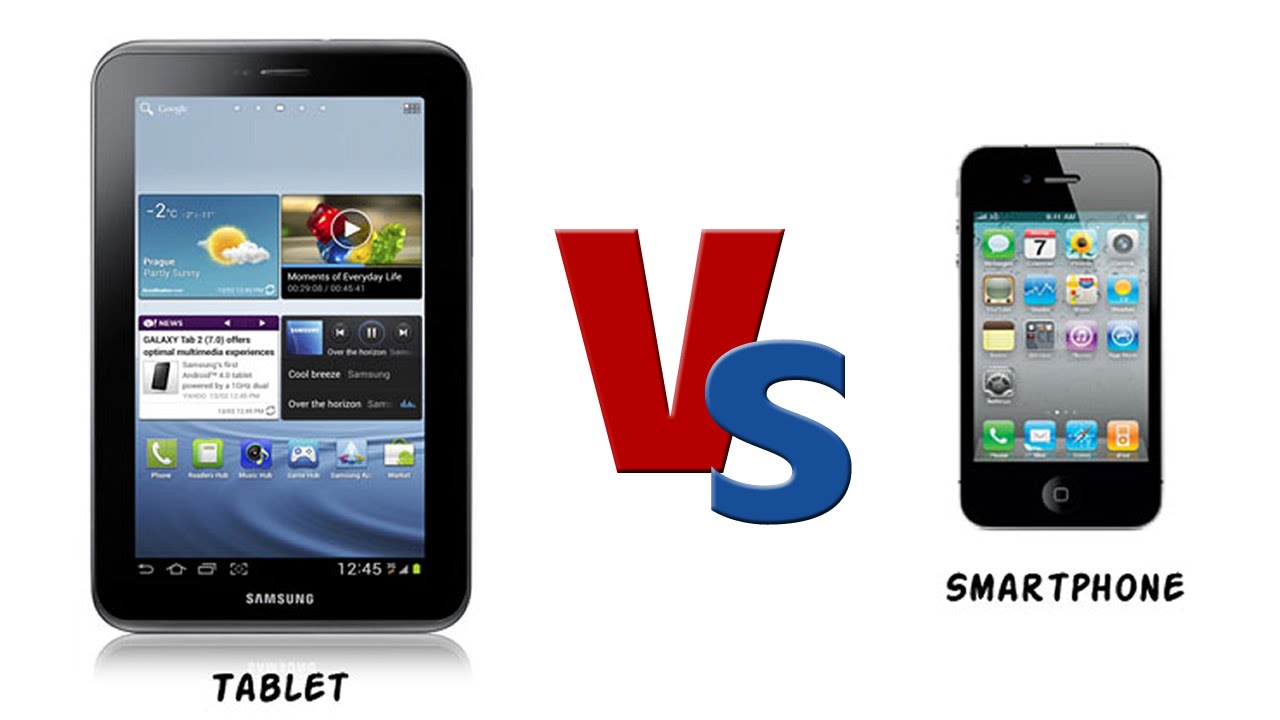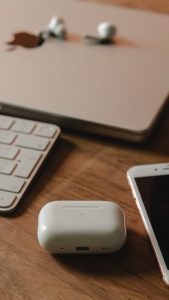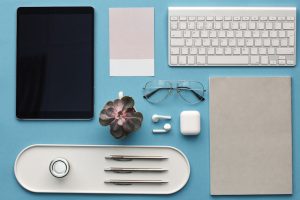Imagine having a device that seamlessly transforms from a pocket-sized smartphone into a spacious tablet. Picture the convenience of carrying just one gadget that caters to all your needs, whether you’re browsing, gaming, or working on the go.
This magical transition isn’t just a distant dream—it’s becoming a reality. By exploring the captivating world of devices that serve as both smartphones and tablets, you can unlock a new level of flexibility and efficiency. Wouldn’t it be incredible to have the power of a tablet in the palm of your hand, ready whenever you need it?
This article will delve into the fascinating technology and practical benefits of these innovative devices. Stay with us to discover how these versatile gadgets can revolutionize your everyday tech experience and simplify your digital life.
Credit: www.abc.net.au
Choosing The Right Device
Selecting between a smartphone and a tablet depends on your needs. Smartphones offer portability for calls and quick tasks. Tablets provide larger screens for reading and watching videos. Consider your main activities to make the best choice.
Choosing between a smartphone and a tablet can feel like a big decision. These devices have become essential in our daily lives, serving different purposes depending on your needs. Whether you’re looking for a portable entertainment hub or a tool for work, finding the right device is crucial. Let’s break down the process to help you make an informed choice.
Assessing Your Needs
Understanding your needs is the first step. Are you looking for a device primarily for communication, or do you need it for entertainment like streaming videos and gaming? Consider what you use your current devices for. If you’re often on the go and need something compact, a smartphone might be ideal. Tablets, on the other hand, are great for reading, watching movies, or browsing with a larger screen. Think about your daily routine. Do you need a device for work presentations or note-taking during meetings? Tablets often come with larger screens and accessories like keyboards, making them suitable for work tasks.
Evaluating Key Features
Next, compare the features that matter to you. Screen size is a significant factor. Smartphones are more portable, but tablets offer a bigger display. Battery life is another key consideration. If you need a device that lasts through long days without frequent charging, check the battery specifications. Some tablets offer extended battery life compared to smartphones. Also, look at the operating systems and app availability. Both Android and iOS offer different experiences. Ensure the apps you rely on are available on the device you choose.
Budget Considerations
Your budget plays a crucial role in your decision. Smartphones and tablets come in a wide range of prices. Think about what you’re willing to invest. High-end smartphones can be quite expensive, but they offer advanced features and better performance. Tablets might offer more value for money if you prioritize a larger screen and don’t need to carry it everywhere. Consider the cost of accessories too. Tablets often require additional purchases like keyboards or styluses to unlock their full potential. So, which device feels right for you? Understanding your needs, evaluating features, and considering your budget can guide you to the perfect choice. Each offers unique benefits that cater to different lifestyles and preferences.
Setting Up Your Tablet
Transform your smartphone skills into tablet expertise with ease. Discover simple steps to set up your tablet. Enjoy a seamless transition and explore features unique to tablets for an enriched digital experience.
Setting up your tablet can be a seamless experience, especially if you’re transitioning from a smartphone. With just a little time and attention, your new device can be ready to go. This section will guide you through the essential steps, ensuring your tablet is configured perfectly and personalized for you.
Initial Configuration
When you first power on your tablet, it will guide you through the initial setup. You’ll be prompted to select a language, connect to Wi-Fi, and agree to terms and conditions. These steps lay the groundwork for a smooth operation. Once connected to Wi-Fi, your tablet will typically check for software updates. Updating right away is crucial to ensure you have the latest features and security patches. Consider this the foundation of a safe and efficient device.
Syncing Accounts
Syncing your accounts is the next logical step. If you’re using a tablet that shares the same operating system as your smartphone, this process becomes even more straightforward. Simply log in with the same credentials, and your apps, settings, and preferences will start to sync. Think about how you use your smartphone and which apps are essential for you on the tablet. Decide whether you want notifications for emails, social media, and other services. This customization ensures the tablet works just like your smartphone, but with more screen space.
Transferring Data
Transferring data can be a breeze if you use cloud services. Apps like Google Drive, iCloud, or Dropbox make it simple to access your photos, documents, and more. Ensure you have adequate storage space on your tablet for any local files you wish to keep. If you’re moving from an older device, consider using the manufacturer’s data transfer app. These tools are designed to make the process of moving contacts, messages, and apps straightforward. Keep in mind, though, that some apps might need a fresh install. Have you ever set up a device only to realize you forgot to transfer your favorite playlist or crucial work files? Double-check everything you need is accessible on your tablet. This prevents any last-minute scrambles to retrieve important data.
Optimizing The Interface
Optimizing your smartphone or tablet interface is crucial for enhancing your user experience. A streamlined interface can make your device a joy to use, transforming everyday tasks into seamless operations. Imagine effortlessly navigating through apps, quickly accessing information, and personalizing your device to match your preferences. Let’s delve into practical ways to optimize your device’s interface.
Customizing Home Screen
Your home screen is the first thing you see. It’s like the front door to your digital world. Consider arranging your apps in a way that makes sense to you. Group similar apps together, or place the ones you use most frequently on the main screen.
Creating folders can help keep things tidy. If you love a clean look, remove unnecessary apps and keep only the essentials. This way, you can focus on what truly matters to you.
Think about the wallpaper. Choose an image that inspires or calms you. A visually appealing home screen can improve your mood and make using your device more enjoyable.
Managing Apps Efficiently
Managing apps efficiently is all about organization. You can start by uninstalling apps you no longer use. This frees up space and speeds up your device.
Use app drawers to keep your screen clutter-free. This feature allows you to access apps without crowding your home screen. You can also categorize apps based on their function, such as work, entertainment, or social.
Keep your apps updated. Updates often come with performance improvements and new features that enhance usability. Regular updates ensure your apps run smoothly.
Utilizing Widgets
Widgets are powerful tools that can transform your home screen into a dynamic hub of information. They provide quick access to essential data without opening an app.
Consider adding a weather widget to stay informed about daily forecasts. A calendar widget can help you keep track of events and appointments effortlessly.
Experiment with different widget sizes and styles. Some may offer more information at a glance, while others maintain a minimalist aesthetic. Find what works best for you and your needs.
Have you thought about how a well-optimized interface might boost your productivity? How much time do you spend navigating your device daily? A few tweaks could save you precious moments and enhance your overall experience.
Enhancing Productivity
Switching from a smartphone to a tablet can boost your productivity. Tablets offer larger screens, which make tasks easier. They provide a more comfortable workspace compared to smartphones. With tablets, you can handle complex tasks effortlessly. The right apps, multitasking techniques, and tools can transform your tablet into a powerful productivity hub.
Using Productivity Apps
Tablets support a range of productivity apps. These apps help organize tasks efficiently. Use calendar apps to track your schedule. Note-taking apps are great for jotting down ideas. Project management tools streamline workflows. Many apps offer cloud integration, keeping your data accessible.
Multitasking Tips
Tablets allow multitasking with ease. You can open multiple apps at once. Split-screen mode is a useful feature. View two apps side by side. Drag and drop content between them. Switch between tasks swiftly. This reduces the time spent on each task.
Keyboard And Stylus Integration
Using a keyboard with your tablet enhances typing speed. It provides tactile feedback, making typing accurate. A stylus is perfect for drawing or note-taking. It offers precision in digital tasks. Both tools transform your tablet into a versatile workstation.
Entertainment On A Tablet
Switching from smartphone to tablet enhances entertainment experiences. Tablets offer larger screens for viewing movies and playing games. This upgrade provides a more immersive and enjoyable experience.
As technology evolves, tablets have become a staple for entertainment. Their larger screens and portability make them ideal for a variety of activities. Whether you’re streaming the latest shows, diving into immersive games, or enjoying a good book, tablets offer a versatile entertainment experience.
Streaming Services
Tablets provide a superior streaming experience. With high-resolution displays, you can enjoy Netflix, Hulu, or Disney+ in stunning detail. The sound quality is often better than smartphones, making movie nights at home even more enjoyable. The convenience of a tablet allows you to watch content anywhere. Whether you’re in bed, on the couch, or even in the kitchen, your favorite shows are just a tap away. Have you ever tried streaming while cooking? It’s surprisingly enjoyable!
Gaming Experience
Gaming on a tablet is a game-changer. The larger screen offers a more immersive experience, whether you’re playing casual games like Candy Crush or more intense ones like PUBG. The touch controls are often more intuitive on a tablet, enhancing gameplay. Tablets also support a wide range of controllers. Connecting a Bluetooth controller can turn your tablet into a mini gaming console. Imagine the freedom of playing your favorite games without being tied to a desk or console.
Reading And Digital Content
Tablets make reading digital content a delight. With apps like Kindle or Apple Books, you can carry an entire library with you. Adjust the font size, background color, and even the brightness to suit your reading environment. Magazines and newspapers are also more interactive on tablets. Rich media like videos and animations bring articles to life. Have you ever thought about how this changes your reading habits? It might make you more engaged with the content. Tablets offer a unique blend of convenience and functionality for entertainment. What’s your favorite way to use a tablet for entertainment?

Credit: www.istockphoto.com
Maintaining Security
Protecting your devices is crucial. Smartphones and tablets store personal information. Use strong passwords and regular updates to ensure security.
Switching from smartphone to tablet can be exciting, but have you considered the security challenges that come with it? Maintaining security is crucial to protect your device and data from threats. It’s easy to overlook, but with a few simple steps, you can safeguard your tablet effectively.
Setting Up Security Features
Start by setting up a strong password or PIN. Think of it as your first line of defense. Use something memorable but hard for others to guess. Enable fingerprint or facial recognition if your tablet supports it. This adds an extra layer of security, making it harder for unauthorized users to access your device. Consider installing security apps. They can offer additional protection by scanning for malware or blocking suspicious activity.
Safe Browsing Practices
Be mindful of the websites you visit. Not all sites are safe, and some might try to steal your information. Look for HTTPS in the URL for secure connections. Avoid clicking on suspicious links or pop-ups. These can lead to phishing sites designed to trick you into revealing personal information. Think twice before downloading apps from unknown sources. Stick to trusted app stores like Google Play or Apple’s App Store to minimize risks.
Regular Software Updates
Keep your tablet’s operating system updated. Manufacturers release updates to patch security vulnerabilities. Set your device to update automatically. This way, you won’t miss critical updates that could protect your device from new threats. Check your apps for updates regularly. Developers often improve security features in newer versions, so it’s vital to keep them current. Have you ever faced a security breach because of outdated software? It’s a frustrating experience that can be avoided with regular updates. By focusing on these security measures, you can enjoy your tablet with peace of mind. How secure do you feel with your current setup? Maybe it’s time to double-check and make those necessary changes.
Troubleshooting Common Issues
Transitioning from smartphone to tablet can be exciting, but it can also come with challenges. You might find yourself facing common issues that hinder the seamless experience you expect. Whether it’s connectivity problems, app crashes, or battery life woes, tackling these issues head-on can make a world of difference. So, let’s dive into some practical solutions to enhance your tablet experience.
Connectivity Problems
Imagine you’re trying to stream your favorite show, but your tablet struggles to stay connected. It’s frustrating, right? Ensure your Wi-Fi is strong and your tablet is within range. Resetting your network settings can work wonders. If Bluetooth is acting up, try turning it off and back on. Does your tablet have a SIM card? Double-check it’s inserted correctly. A small tweak can often resolve big connectivity woes.
App Crashes
Have you ever opened an app only for it to crash instantly? Annoying! Keep your apps updated to minimize such issues. Clearing cache can also help—just go to settings and give it a quick refresh. Sometimes, reinstalling the troublesome app can be the simplest fix. Remember, your tablet’s software update can prevent many app glitches.
Battery Life Optimization
Is your tablet’s battery draining faster than expected? You’re not alone! Start by checking which apps consume the most power. Reducing screen brightness and disabling background app refresh can extend battery life. Do you use power-hungry features like GPS or Bluetooth continuously? Turn them off when not needed. Consider using battery-saving modes for longer usage.
Curious about more tips? How do you manage these issues on your device? Share your thoughts and let’s make our tablets work smarter!

Credit: abqphonerepair.com
Frequently Asked Questions
What Is The Main Difference Between A Smartphone And A Tablet?
The main difference is size and functionality. Smartphones are smaller, designed for portability and calls. Tablets are larger, providing a better experience for reading and media consumption. Both devices can run apps, but tablets often have more robust processing power for multitasking.
Can A Tablet Replace A Smartphone?
Tablets can perform many smartphone functions but lack call capabilities. They are great for browsing, reading, and streaming. However, smartphones are more portable and better for on-the-go communication. Some tablets can make calls, but they require additional accessories or apps.
Is A Tablet Better For Gaming Than A Smartphone?
Tablets often offer a superior gaming experience due to larger screens. They provide more immersive gameplay with better graphics. However, smartphones are more portable and convenient for quick gaming sessions. Tablet gaming also benefits from longer battery life and enhanced processing power.
Do Tablets Have Better Battery Life Than Smartphones?
Tablets generally have better battery life due to larger batteries. They are designed for prolonged use, such as streaming and reading. However, actual battery life varies by model and usage. Smartphones may drain faster due to constant connectivity and smaller batteries.
Conclusion
Transitioning from a smartphone to a tablet offers unique benefits. Tablets provide larger screens for enhanced viewing. They are great for reading and streaming content. Tablets also offer improved battery life. This means more usage time for apps and browsing.
Portability remains a key feature for both devices. Tablets give a different experience but keep convenience intact. They are ideal for work and play. Both devices serve their purpose well. Choosing depends on your personal needs. Consider what you value most.
Screen size? Battery life? Portability? Think about it. Decide which device suits your lifestyle best.





